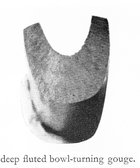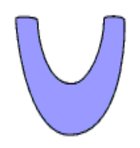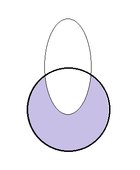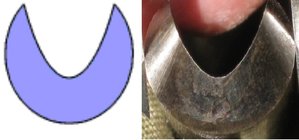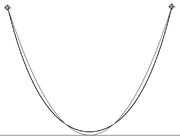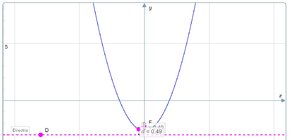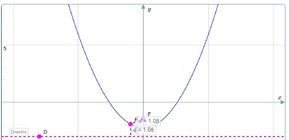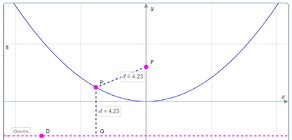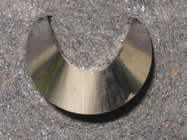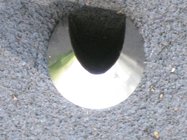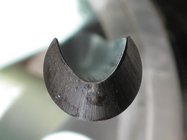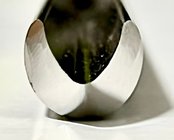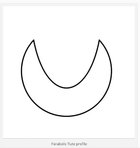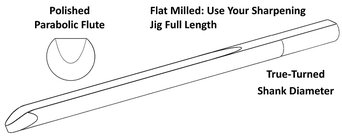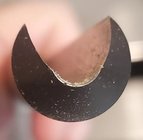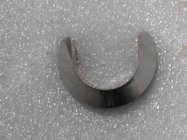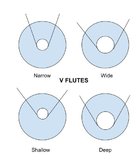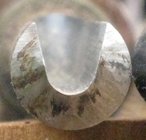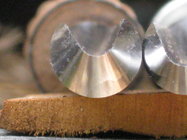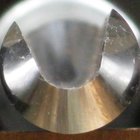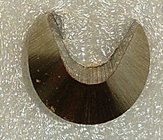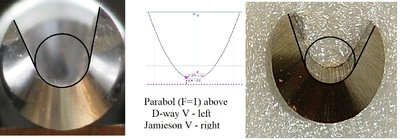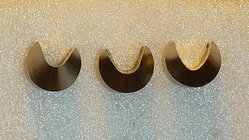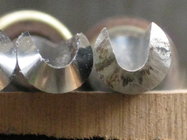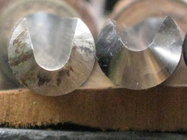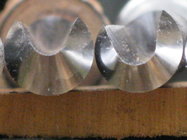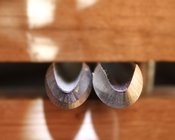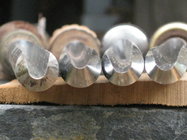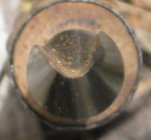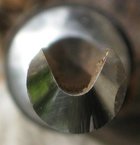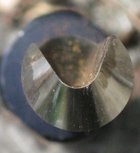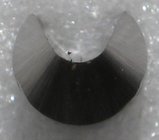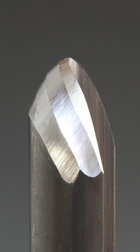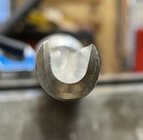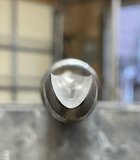Bowl Gouge Flute Descriptors - Part 1 of 8
Warning: Long multi-post starter to this thread… and some folk may prefer to be spending their time out in their workshop turning wood than engaging in pedantic stuff about flute profiles and names… :~}
I have become concerned about the sloppy and growing misuse of some bowl gouge flute descriptors and my focus in this thread is entirely on those descriptors in order to reduce the confusion that I’m seeing over their use in our woodturning community.
It is not my intention in this thread to discuss my or your preferences for one flute profile over another or which flute profile might be better suited to a particular grind or use. There have and will be many other threads for that.
Let’s keep this thread to a discussion on just the bowl gouge flute descriptors.
Because of the limits on photo attachments I will cover the following in separate posts:
Part 1 Intro and Elliptical
Part 2 Catenary or Parabolic
Part 3 Examples of Parabolic Flutes
Part 4 Other Examples of Parabolics
Part 5 The Vs and Us
Part 6 Other Examples in the V Flute Tradition
Part 7 A Few side by side Comparisons
Part 8 The Importance of Accurate Descriptors
Elliptical
Back in the early 70s when I began woodturning the flutes on bowl gouges had simple names like shallow and deep, which were easily understood. I can’t recall anyone giving the flute on the deep bowl gouges any other descriptor than that, but looking at the flute on the forged bowl gouge that Peter Child included in his 1970s book it might have been called elliptical…
And here is how Roy Child (Peter Child’s son) drew that elliptical flute profile that they were using back then in his later 1999 article http://www.peterchild.co.uk/info1/sflute.htm
There was then a period when elliptical was more widely used to describe a flute profile that had a continuously changing curve and Henry Taylor Tools described the gouge that they made to Roy Child’s design as having an “elliptical flute cross section”, which they called the SuperFlute. The ellipse is a precise mathematical curve derived from Conics and where a flute is elliptical it would be appropriate to call it that, but few are.
Here is how an elliptical flute would look in a round bar…
Roy Child himself neither named his flute design the SuperFlute nor described it as elliptical. In his own words he simply described it as follows, “it has a large radius at the sides blending into a small radius at the bottom of the flute.” Here is a diagram drawn by Roy of his flute profile design alongside the SuperFlute made for him by Henry Taylor Tools…
So, as can be seen, the SuperFlute is neither a true ellipse (as specified in Conics) nor is it a parabola (more on those later), although it is much closer to a parabola than some bowl gouge flute profiles that have been described as parabolic. It is in fact closest to the catenary profile as seen in the example of a chain suspended from two level points or arches like the St Louis Arch that might be seen by some of you on your side of the pond.
Warning: Long multi-post starter to this thread… and some folk may prefer to be spending their time out in their workshop turning wood than engaging in pedantic stuff about flute profiles and names… :~}
I have become concerned about the sloppy and growing misuse of some bowl gouge flute descriptors and my focus in this thread is entirely on those descriptors in order to reduce the confusion that I’m seeing over their use in our woodturning community.
It is not my intention in this thread to discuss my or your preferences for one flute profile over another or which flute profile might be better suited to a particular grind or use. There have and will be many other threads for that.
Let’s keep this thread to a discussion on just the bowl gouge flute descriptors.
–o0o–
Because of the limits on photo attachments I will cover the following in separate posts:
Part 1 Intro and Elliptical
Part 2 Catenary or Parabolic
Part 3 Examples of Parabolic Flutes
Part 4 Other Examples of Parabolics
Part 5 The Vs and Us
Part 6 Other Examples in the V Flute Tradition
Part 7 A Few side by side Comparisons
Part 8 The Importance of Accurate Descriptors
Elliptical
Back in the early 70s when I began woodturning the flutes on bowl gouges had simple names like shallow and deep, which were easily understood. I can’t recall anyone giving the flute on the deep bowl gouges any other descriptor than that, but looking at the flute on the forged bowl gouge that Peter Child included in his 1970s book it might have been called elliptical…
And here is how Roy Child (Peter Child’s son) drew that elliptical flute profile that they were using back then in his later 1999 article http://www.peterchild.co.uk/info1/sflute.htm
There was then a period when elliptical was more widely used to describe a flute profile that had a continuously changing curve and Henry Taylor Tools described the gouge that they made to Roy Child’s design as having an “elliptical flute cross section”, which they called the SuperFlute. The ellipse is a precise mathematical curve derived from Conics and where a flute is elliptical it would be appropriate to call it that, but few are.
Here is how an elliptical flute would look in a round bar…
Roy Child himself neither named his flute design the SuperFlute nor described it as elliptical. In his own words he simply described it as follows, “it has a large radius at the sides blending into a small radius at the bottom of the flute.” Here is a diagram drawn by Roy of his flute profile design alongside the SuperFlute made for him by Henry Taylor Tools…
So, as can be seen, the SuperFlute is neither a true ellipse (as specified in Conics) nor is it a parabola (more on those later), although it is much closer to a parabola than some bowl gouge flute profiles that have been described as parabolic. It is in fact closest to the catenary profile as seen in the example of a chain suspended from two level points or arches like the St Louis Arch that might be seen by some of you on your side of the pond.
Last edited:

